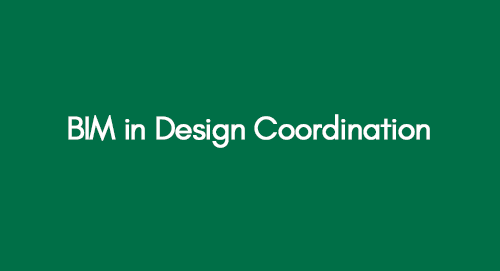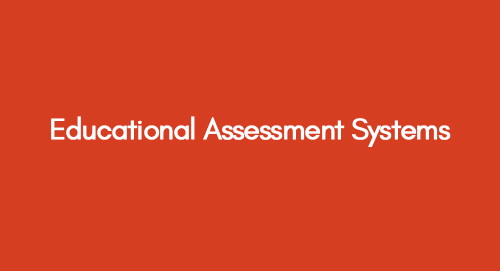
Economics
December 19, 2020
Sustainable Supply Chain Risk Management: A Framework Analysis
December 20, 2020The present century's era is marked by the relentless march of technological advancement, particularly within the industrial sector. This evolution has become increasingly effective and robust with the advent of Integrated Project Delivery (IPD) systems.
These innovative approaches have reshaped how projects are conceived, executed, and managed, fostering greater collaboration and efficiency throughout the project lifecycle.
Learn More About Building Information Modelling (BIM)
Explore More About Building Information Modelling (BIM)
Furthermore, the synergy between Building Information Modelling (BIM) and the integration of IPD has gained notable significance among professionals, architects, and designers. This strategic amalgamation has opened new horizons in project planning and execution, empowering stakeholders to make informed decisions and streamline processes. The combined power of BIM and IPD is revolutionizing the construction and design industries, driving them towards a more interconnected and data-driven future. This report aims to discuss the strengths and restrictions of delivery systems such as BIM and also to determine/address the following three research questions:
- How do the implications of such systems enable a reduction in errors?
- Are there prospects of greater cost certainty through the adaptation of such systems?
- What are the strengths and limitations of the Integrated Project Delivery (IPD) approach in reducing risks?
Integrated Project Delivery (IPD)
Before delving into the specific case of BIM, which is the central focus of this research, it is essential to establish the foundation of the broader concept of the Integrated Project Delivery (IPD) system. IPD is a distinctive methodology and approach, as defined by the American Institute of Architects. It is a project delivery process that integrates various elements, including systems, individuals, business structures, and diverse practices, converging at a single point. These integrated resources and parameters are harnessed to minimize waste and enhance resource optimization by maximizing overall efficiency.
IPD is such an exceptional method that it can be easily applied to phases of designing, assemblage and construction (AIA, 2012).
The IPD principle encompasses a wide range of contractual scenarios, with IPD teams typically composed of owners, architects, and contractors. In all instances, the owner, principal designer, and primary constructor jointly oversee the entire project integration process, from project initiation to final handover.
IPD is a project delivery method that harmonizes systems, businesses, individuals, and all parties involved in an agreement. It revolves around harnessing the collective expertise within an organization. This approach entails structuring projects by providing incentives and setting goals for team members, facilitating efficient project execution while minimizing resource wastage and maximizing overall company productivity. IPD provides comprehensive guidance to the construction team across all project phases, from initial infrastructure development to the finishing touches, such as fabrication. Additionally, it fosters strong collaboration with stakeholders and promotes effective communication between the project team and stakeholders to keep them informed about the project's progress. Its primary objective is to engage every department within the company equitably, striving for transparency and achieving optimal results (Cook & Lott, 2007). BIM, on the other hand, is engineered to project delivery tool which has been derived from the concept of the IDP, details of which have been outlined in the following section
Building Information Modelling (BIM)
BIM design coordination represents a relatively novel paradigm within the realm of building and project development, ushering in a transformative approach to how engineers and professionals engage with infrastructure, as well as the design and planning of utilities. The BIM tool serves as an indispensable support system for these professionals, granting them the capability to tackle previously daunting challenges.
Within the framework of integrated project delivery, BIM design coordination plays a pivotal role in fostering seamless collaboration. It enables project teams to process information effectively, offering a comprehensive understanding of underlying issues and the ability to devise efficient solutions. This model has proven to be highly effective in facilitating the exchange of information among diverse models and the individuals involved in a specific project (McNell et al., 2014).
How Does an Integrated Project Delivery with BIM Enhance the Project’s Productivity?
The most common challenges in the construction field are cost, time, design and fulfilling the business needs. Mistakes in these fields ultimately cost the whole project and the people involved. To minimise errors in these areas, IPD develops a road map with six steps leading to successful project completion. These steps are discussed below:
Understand the Value Proposition
Misunderstanding the value of an organisation is a common error. So, the first focus of IPD is to outline where and how value can be generated in an organisation and ensure that the whole industry is benefiting. This allows the engineers to yield greater productivity and usability of their designs. The companies can benefit from it by having a better sequence of construction and manufacture. Knowing the value of an organisation is critical because it is responsible for the foundation of IPD in an organisation (Salman, 2011).
Despite most companies focusing on gaining profit, working on this point minimises the cost and induces better staff participation and more incredible energy in completing a project. The investment and the processes involved can be validated by gaining an insight and understanding of business cases. This value proposition helps evaluate improvement by specifying business measures (Hornsby & Allan, 2012).
Set Requirements
Once the BIM principles have established clear values, all the underlying processes are meticulously mapped. Successfully implementing a process, as the BIM principles strategies, demands a structured approach. This systematic approach not only ensures the correct functioning of the system but also facilitates the seamless execution of a program, minimizing the likelihood of errors. Engaging in consultations with the company's stakeholders is advisable to achieve better results in meeting project requirements. This inclusive approach promotes transparent development with the involvement of all key stakeholders (Forbes & Ahmed, 2010).
Understand the Information Requirements
For a successful, error-free construction plan, gathering primary data on all the requirements in the early stages of designing the infrastructure is necessary. This will help to eliminate flaws throughout the construction and management process. IPD is entirely subjective in defining how an organisation treats the data because it is the assets the whole project will stand on. Any error or mistake in the provided information can adversely affect the final results (Kent & Becerik-Gerber, 2010). However, the data strategy used by IPD should be free of any intellectual property theft or liability concerns.
Choose the Technology
Choosing the appropriate technology for a project is the main focus of the IPD approach. In this approach, the technology has evolved constantly according to the user's needs. For example, projects like building a nuclear plant require technology that not only caters for the geographic part but also aids in developing the facility, keeping in mind the sensitivity of operations that must be carried out there. This technology must be chosen after carefully evaluating the project's requirements (Dykstra, 2011).
Implement the Change
For a company to adapt the IPD approach, it is necessary to evaluate the strengths and capabilities of their staff members who actually have to carry out the proposed changes, such as implementing BIM modelling in their project. If the methodology is new, the existing staff needs proper training to implement the process successfully. The transfer of knowledge for those working with BIM is also a company asset that can be used in any plan. Therefore, the company should implement changes according to the IPD plan and requirements (Kensek, 2014).
Realise the Benefits
After implementing the system, the possible benefits can be realised very quickly. Evaluating the metrics that will tell whether the benefits are the same as the values set in the initial stages is essential. If not, then changes must be made to achieve the targeted values. Tracking progress and monitoring values help achieve continuous improvement, and there is a low chance of loss.
Using IPD in Estimating Cost Certainty
Within the AIA project phases, design coordination in construction plays a pivotal role in effectively managing project budgets. The emphasis remains continuous, focusing on monitoring both cost overruns and cost reductions. This method ensures that the estimated project cost is seldom exceeded, owing to the meticulously coordinated steps across the various AIA project phases. The initial estimated cost is determined through a synthesis of insights, deliberations, and the collective experience of the professional team members. Additionally, the ongoing monitoring and evaluation processes within the AIA project phases further diminish the likelihood of costs exceeding the originally projected budget.
Within the IPD delivery method, project stakeholders and participants willingly invest in a project, understanding its inherent financial risks. They are keen to avoid cost overruns that could impact their profits negatively. Consequently, the integrated project delivery method considers this potential scenario and incorporates "managing risk situations" as an integral part of its planning. This planning of dealing with the risk situation greatly helps with greater cost certainty (Deutsch, 2011). IPD with BIM integrated the following principles for budgeting to reduce cost errors in a project:
- Effective and improvised administration of the construction project by eliminating any difficulty or communication problem between the owner and the planner, designer and the contractor’s teams
- Taking steps to complete the project within the given budget by optimising construction and procurement strategies after carefully considering different teams' project requirements and risk assumptions.
- Reducing the chances of the increased or overrun budget through effective management. This is possible due to increased communications, precise construction, and budgetary planning through IPD.
- Educating architects on the project's cost-effectiveness through access to the construction and current prices. This information is provided to them in the initial stages of design making. A different tool, such as BIM, is highly influential in this regard.
- Estimating costs of each developmental phase in the beginning.
- Taking steps to ensure there is no legal claim of additional budget or compensation in future (Kent & Becerik-Gerber, 2010).
Cost Estimation
The basic elements in the cost estimation process are the pricing and quantity take-off. These quantities can be obtained in a cost database by being integrated into the building information model. However, this model does not help in getting pricing. To estimate the cost of a project, a cost estimator expert is required to estimate and analyse the cost of every material used in that project and how it should be installed. The pricing of each step is available in the database; however, if it is missing for a degree, then it is the responsibility of the cost estimator that he should study more deeply and come out with an accurate pricing solution (Azhar et al., 2009).
For example, if there is an activity of pouring concrete, then the budget for everything, such as wire mesh, concrete rebar, etc., and the quantity to be used should be defined by BIM. This model will counter every detail of everything involved in the activity. The cost estimator should evaluate each unit price, material cost, labour cost and even estimated profits; the labour units will involve the mobilisation, their working duration wages and material cost, including the sum of all the materials used. Once the unit prices are obtained, the entire project's cost is estimated by multiplying the total quantity extracted from the BIM. The data input and output are quite good in the BIM approach. For the successful implication of BIM, the architect and the constructor must agree on basic component definitions. There would be only successful results (Gudnason & Scherer, 2012).
Strength and Limitation of IPD in Reducing Risks
Integrated Project Delivery (IPD) is an emerging innovation in construction delivery. It usually conceives the owner, the architect or engineer and the contractor, all entering into a single contract and operating as a collaborative team to design and develop the project with shared risks and rewards in the final cost, schedule, and quality of the larger project. As stated, IPD is like a joint venture strategy for design and construction. It reflects a radical deviation from conventional delivery methods that isolate responsibilities, liabilities, communication, risks, and rewards with contracts that often lack an impetus to collaborate and work toward the shared objective of a successful overall project.
IPD is a growing delivery strategy based on broad concepts that can be tailored project-by-project. While there is no concrete description of IPD, the following basic concepts are generally present:
One Integrated Agreement
The main team members, including the owner, architect, engineer, and contractor, enter into a single contract. Either contracting method for IPD manifests a considerably different contractual design from Design Bid Build, in which the owner enters into separate contracts with the architect/engineer and the general contractor, who are accountable solely to the owner.
Shared Risk and Reward
The main IPD team members manage and share risks and rewards in the project's results, generally its cost and completion time. However, performance indicators can be established, including quality, sustainability, minority hiring, etc.
One method with IPD is to split the compensation of each core team member into three categories: direct cost, overhead and profit, and bonus.
Collaboration
Rather than each party having its own on-site office, IPD projects involve a so-called ‘big room’ in which all parties are stationed together to exchange ideas, collaborate and function as a team. The IPD contract must stipulate how BIM or other technology will be used, specifically in input, access, alterations, confidentiality, copyright ownership, technological capability, dependability on data provided by others and restricted or complete responsibility for errors.
Joint Decision-Making
To make decisions regarding the project, all stakeholders may require approval, votes may be weighted, veto power may be vested in certain team members, or the owner may reserve the privilege to decide when the team members cannot arrive at a consensus.
Dispute and Liability Avoidance
A hallmark of IPD is minimising the risk of disputes, liability, and litigation to promote cooperation and a team environment. The project team members may agree upon different methods to appropriately limit liability: they may excuse each other from liability for good faith errors in judgment, even if negligence is found, except, of course, to the extent that deliberate misconduct prevails.
Advantages of Integrated Project Delivery
An objective of the design coordination process, which is to potentially benefit all participants in the design and construction of a project, is Integrated Project Delivery (IPD). Some of its specific possible advantages are stated below:
- Cost savings for the owner (possibly the costs of construction, operations, and maintenance) result from the incentive for the team members to earn bonuses.
- Rapid project conclusion for the owner, again due to the incentive for the team members to earn bonuses.
- Bonuses are given out to the designers and contractors for accomplishing cost savings and faster completion of the project, as other project objectives.
- Minimized risk of design and construction defects as a result of the collaborative teamwork strategy
- Minimized liability for the designers and contractors as a result of the acknowledged limitations of liability and dispute aversion
Disadvantages of Integrated Project Delivery
IPD is not meant for everyone and may not live up to its maximum advantage. Some of its shortcomings are stated below:
- Highly expert designers or contractors may not be familiar with IPD and be reluctant to take part in an IPD project
- Getting all prominent IPD team members to agree on one party agreement could prove impossible or frustrating.
- An owner may face challenges obtaining financing because lenders are not familiar with IPD or may not like its strategy for various reasons, such as the potential for bonuses to be paid because of the limitations of liability.
- Limiting liability implies that the party suffering economic damages or other detrimental consequences would be left ‘holding the bag’ (the insurance industry is reviewing possible products to insure against such risks to facilitate IPD.
- The bonus incentive system requires carefully checking budgets and schedules to ensure they are fair, appropriate, and not excessive.
- Solid leadership and management must endorse teamwork to ensure active, enthusiastic, positive participation and avert lax participation – IPD is not meant for laid-back or slack workers.
Conclusion
IPD is designed solely on collaboration, which is, in turn, based on trust. As teams are structured, the entire focus is on project outcome instead of the traditional approach in which individual goal is focused. The best thing is the presence of mutual trust and respect towards the team members, which requires involvement by every party. Compensation is awarded to the teams which have obtained project goals by utilising innovative business models through collaboration and efficiency.
The traditional project delivery method is based on fragments assembled just as needed. Then again, they are strongly hierarchical and controlled entirely by higher management—the processes are linear, distinct and segregated into sub-tasks according to teams’ knowledge and expertise. The risk factor involved in such projects is high at the individual level, which is then transferred to the greatest extent possible. Further, this process promotes innovation and a culture of exceptional high-class performance. During this construction phase, the project is ascertained through intensified planning, which increases efficiency and savings. As responsibilities are clearly defined, problems are identified and resolved immediately without individual liability. The complete team is responsible for errors; hence, disputes are resolved promptly.
IPD is possibly the most enthralling innovation in the design and construction industry in decades. With the possibility of considerable cost savings and efficiencies rarely witnessed under conventional delivery methods, and with the lure of camaraderie and a collaborative, teamwork environment, IPD could become the leading delivery method in the industry.
References
AIA, 2012. The conceptual approach for Integrated Project Delivery (IPD) and Building Information Modelling (BIM). [Online] Available at: https://web.iit.edu/sites/web/files/departments/academic-affairs/Academic%20Resource%20Center/pdfs/integrated_project_delivery.pdf [Accessed 26 November 2015].
Azhar, S., Brown, J. & Farooqui, R., 2009. BIM-based sustainability analysis: An evaluation of building performance analysis software. Proceedings of the 45th ASC Annual Conference, 1.
Cook, R. & Lott, F., 2007. Integrated Project Delivery: A Guide. [Online] Available at: http://www.aia.org/groups/aia/documents/pdf/aiab083423.pdf [Accessed 27 November 2014].
Demkin, J.A., 2008. The Architect's Handbook of Professional Practice. Joseph A. Demkin, American Institute of Architects.
Deutsch, R., 2011. BIM and Integrated Design: Strategies for Architectural Practice. John Wiley & Sons.
Dykstra, A., 2011. Construction Project Management: A Complete Introduction. Alison Dykstra.
Forbes, L.H. & Ahmed, S.M., 2010. Modern Construction: Lean Project Delivery and Integrated Practices. CRC Press.
Gudnason, G. & Scherer, R., 2012. eWork and eBusiness in Architecture, Engineering and Construction: ECPPM 2012. CRC Press.
Hornsby, S. & Allan, J., 2012. Building Information Modelling: The BIM Revolution. [Online] Available at: https://www.ibm.com/smarterplanet/global/files/building_information_modelling_ibm_pov.pdf [Accessed 28 November 2015].
Kensek, K.M., 2014. Building Information Modelling. Routledge.
Kent, D.C. & Becerik-Gerber, B., 2010. Understanding construction industry experience and attitudes toward integrated project delivery. Journal of construction engineering and management.
McNell, D., Allison, H., Black, W. & Cukrow, M., 2014. Building Information Modelling. [Online] Available at: http://www.infocomm.org/cps/rde/xbcr/infocomm/Brochure_BIM.pdf [Accessed 27 November 2015].
Salman, A., 2011. Building information modelling (BIM): Trends, benefits, risks, and challenges for the AEC industry. Leadership and Management in Engineering.
Get 3+ Free Dissertation Topics within 24 hours?














